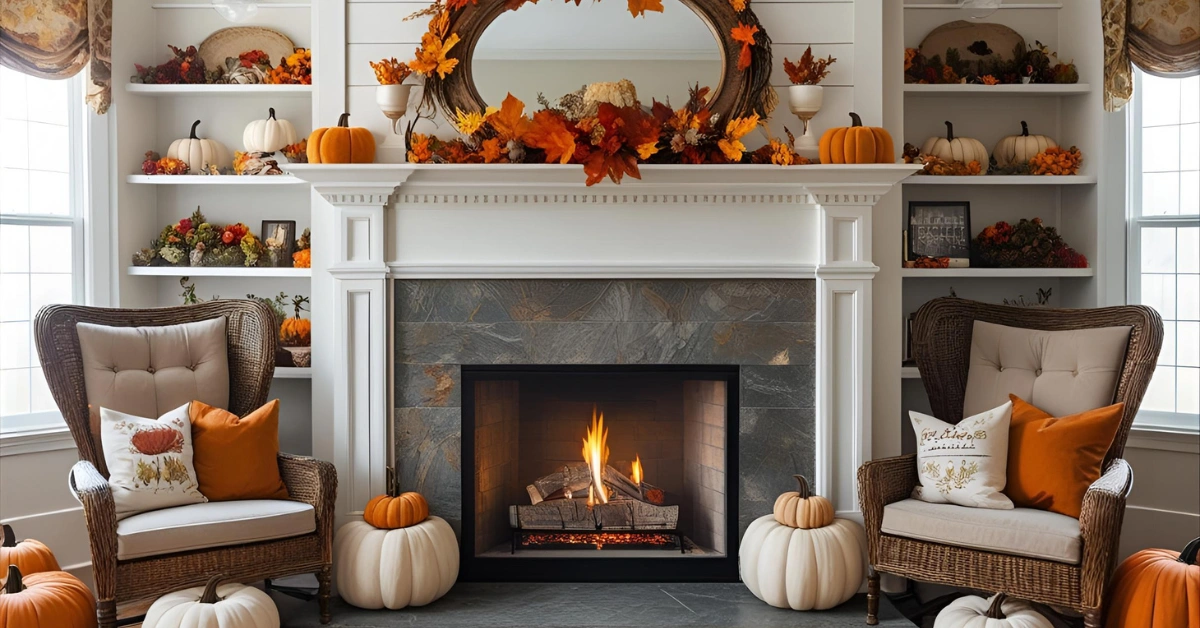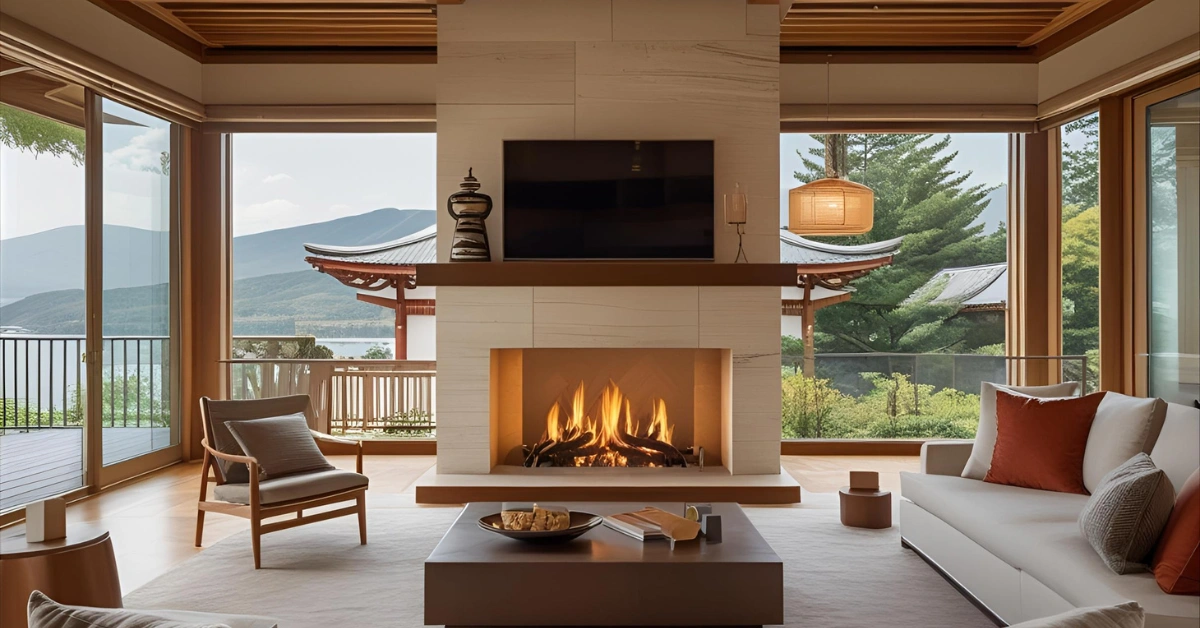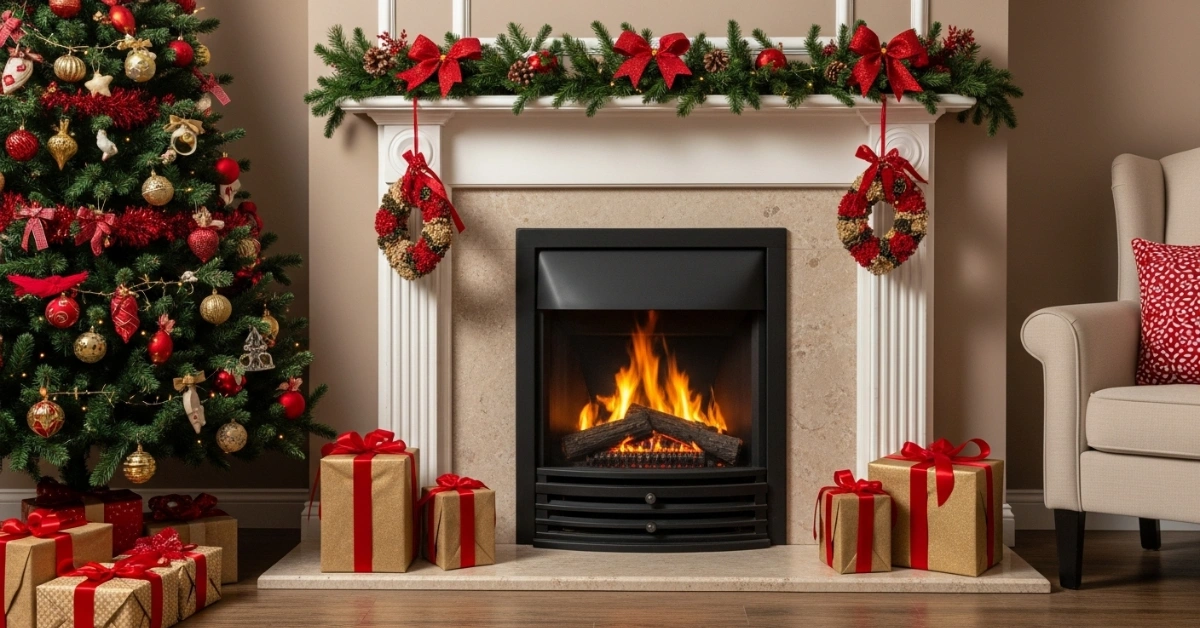Cozy Traditional English Fireplace Ideas for 2025

Imagine coming home on a chilly evening, yearning for warmth and a cozy ambiance, only to find your living space feeling cold and uninspiring. A Traditional English Fireplace can transform that experience, bringing not just heat but a timeless charm that elevates your home’s aesthetic. This iconic feature, steeped in history and elegance, offers a perfect blend of functionality and style. In this guide, we’ll explore the allure of the Traditional English Fireplace, offering design inspiration, practical tips, and expert insights to help you create a welcoming focal point in your home that stands the test of time.
Whether you’re renovating a period property or adding classic charm to a modern space, a Traditional English Fireplace provides a solution that’s both practical and visually stunning. From understanding its historical roots to choosing the right materials and incorporating it into your interior design, this comprehensive guide will equip you with everything you need to bring this classic feature to life.

The History of the Traditional English Fireplace
Origins in Medieval England
The Traditional English Fireplace traces its roots back to medieval England, where open hearths were central to homes for cooking and heating. By the 16th century, fireplaces evolved into more structured designs, often made of stone or brick, with chimneys to vent smoke. According to the Victoria and Albert Museum, these early fireplaces were not just functional but also status symbols, showcasing a homeowner’s wealth through ornate designs.

Evolution Through the Centuries
By the Georgian and Victorian eras, the Traditional English Fireplace became a centerpiece of interior design. Intricate mantels, often crafted from wood or marble, featured carvings inspired by classical architecture. The National Trust notes that fireplaces in grand homes were designed to reflect the owner’s taste, with elements like columns, friezes, and decorative tiles. This evolution cemented the fireplace as a hallmark of English style, blending practicality with artistry.

Why It Remains Relevant Today
Today, the Traditional English Fireplace continues to captivate homeowners for its ability to evoke warmth and nostalgia. Its versatility allows it to fit seamlessly into both historic and contemporary homes, making it a timeless choice. Interior designer Sarah Thompson shares, “A well-designed fireplace anchors a room, offering a sense of history while meeting modern needs for comfort and style.”

Key Features of a Traditional English Fireplace
A Traditional English Fireplace is defined by distinct characteristics that set it apart from other styles. Here are the core elements:

- Materials: Typically crafted from stone, brick, or marble, with wooden mantels in some designs.
- Design: Symmetrical, with clean lines and classical details like columns or corbels.
- Hearth: A prominent hearth, often tiled or made of stone, extends into the room for safety and aesthetics.
- Mantel: A sturdy, decorative mantel serves as a display area for art or family heirlooms.
- Chimney Breast: Often protrudes slightly, creating a focal point in the room.
These features combine to create a fireplace that’s both functional and visually striking, as noted by interior designer James Hartley: “The beauty of a Traditional English Fireplace lies in its ability to balance grandeur with simplicity.”
Benefits of Installing a Traditional English Fireplace
Aesthetic Appeal
A Traditional English Fireplace instantly elevates a room’s aesthetic, serving as a natural focal point. Its classic design complements various styles, from rustic cottages to elegant townhouses. For example, in a Cotswolds home I visited, a restored 18th-century fireplace transformed a plain living room into a cozy, inviting space.

Practical Warmth
Beyond its beauty, a Traditional English Fireplace provides efficient heating. Wood-burning models offer a sustainable heat source, while gas or electric inserts cater to modern convenience. According to the Energy Saving Trust, a well-maintained fireplace can reduce reliance on central heating, potentially lowering energy costs.
Increased Property Value
A well-designed fireplace can boost your home’s market value. Real estate experts report that homes with fireplaces often sell faster, as buyers associate them with luxury and comfort. A Traditional English Fireplace, with its timeless appeal, is particularly attractive to buyers seeking character.
Versatility in Design
Whether you prefer a minimalist or ornate look, the Traditional English Fireplace adapts to your vision. Its neutral palette and classic lines make it a versatile canvas for personalization, from rustic brick to polished marble.
Choosing the Right Traditional English Fireplace for Your Home
Assessing Your Space
Before selecting a Traditional English Fireplace, consider your room’s size and layout. A large, ornate fireplace suits spacious living areas, while a compact design works better in smaller rooms. Measure the wall space and ensure proper ventilation, especially for wood-burning models.

Material Options
- Stone: Durable and rustic, ideal for country-style homes.
- Brick: Offers a warm, textured look, perfect for cozy interiors.
- Marble: Exudes elegance, suitable for formal spaces.
- Wood: Often used for mantels, adding warmth and charm.
Interior designer Emma Clarke advises, “Choose materials that complement your home’s existing palette. For instance, a marble fireplace can elevate a modern space, while brick suits a farmhouse aesthetic.”
Fuel Type
- Wood-Burning: Traditional and eco-friendly, but requires regular maintenance.
- Gas: Convenient and clean, with realistic flame effects.
- Electric: Easy to install and ideal for apartments or homes without chimneys.
Each option has its merits, so weigh factors like maintenance, cost, and environmental impact. For example, a gas fireplace in a London flat I saw provided instant warmth without the hassle of wood storage.
Design Ideas for Incorporating a Traditional English Fireplace
1. Classic Georgian Elegance
Channel the Georgian era with a marble Traditional English Fireplace featuring symmetrical columns and a simple mantel. Pair it with neutral walls and antique furniture for a refined look. Add a large mirror above the mantel to enhance the sense of space.

2. Rustic Cottage Charm
Opt for a brick fireplace with a weathered finish to create a cozy, countryside vibe. Surround it with exposed beams and soft textiles, like wool throws and linen cushions. A client in Yorkshire transformed their cottage with this style, making the fireplace the heart of the home.

3. Victorian Opulence
Choose an ornate fireplace with intricate tilework and a carved wooden mantel. Deep jewel tones, like emerald or sapphire, complement this style. According to House & Garden, Victorian-inspired fireplaces add drama and sophistication to dining rooms.

4. Modern Minimalism
For a contemporary twist, select a sleek stone fireplace with clean lines. Pair it with minimalist decor, like a single bold artwork above the mantel. This approach works well in urban lofts, blending tradition with modernity.

5. Eclectic Fusion
Combine a Traditional English Fireplace with eclectic elements, like colorful tiles or global-inspired decor. For instance, a friend’s London home features a brick fireplace surrounded by Moroccan lanterns and vibrant rugs, creating a unique, inviting space.

Practical Tips for Maintaining a Traditional English Fireplace
Regular Cleaning
Keep your fireplace in top condition by cleaning it regularly. Remove ash and soot from wood-burning fireplaces weekly, and clean the chimney annually to prevent blockages. The Chimney Safety Institute of America recommends professional inspections every year.

Safety Measures
- Install a carbon monoxide detector near the fireplace.
- Use a fire screen to prevent sparks from escaping.
- Ensure proper ventilation to avoid smoke buildup.
Seasonal Upkeep
Before winter, check the chimney for creosote buildup, which can cause fires. For gas fireplaces, inspect the burner and pilot light. Electric fireplaces require minimal maintenance but should be dusted regularly to maintain efficiency.
Decorating the Mantel
The mantel is a perfect spot for seasonal decor. Try these ideas:
- Spring: Fresh flowers in pastel vases.
- Summer: Coastal elements like seashells or driftwood.
- Autumn: Pumpkins and warm-toned candles.
- Winter: Evergreen garlands and fairy lights.
Designer Laura Bennett suggests, “Keep mantel decor simple to let the fireplace’s beauty shine. A few curated pieces create a balanced, elegant look.”
Common Mistakes to Avoid
Oversizing the Fireplace
A fireplace that’s too large can overwhelm a room. Ensure the proportions match your space. For example, a massive fireplace in a small cottage can feel imposing rather than cozy.

Neglecting Ventilation
Poor ventilation can lead to smoke or odor issues. Always consult a professional to ensure your chimney or flue is properly installed.
Overloading the Mantel
Too many decorations can clutter the mantel and detract from the fireplace’s charm. Stick to a few statement pieces for a polished look.
Cost Considerations for a Traditional English Fireplace
The cost of installing a Traditional English Fireplace varies based on materials, fuel type, and labor. Here’s a breakdown:

| Type | Cost Range (USD) | Pros | Cons |
|---|---|---|---|
| Wood-Burning | $2,000–$7,000 | Authentic, eco-friendly | High maintenance, chimney needed |
| Gas | $1,500–$5,000 | Convenient, low maintenance | Higher fuel costs |
| Electric | $500–$2,500 | Easy to install, no chimney needed | Less authentic flame |
Source: HomeAdvisor, 2025 data
For a custom-built fireplace, expect to pay more for premium materials like marble. Budget for professional installation to ensure safety and compliance with local codes.
Where to Find Inspiration and Resources
- Museums and Historic Homes: Visit places like Chatsworth House or Blenheim Palace to see authentic Traditional English Fireplaces.
- Design Magazines: Publications like Country Living and Homes & Gardens offer stunning fireplace ideas.
- Online Platforms: Pinterest and Instagram are treasure troves for design inspiration. Search hashtags like #EnglishFireplace or #TraditionalDecor.
- Local Suppliers: Check with local fireplace specialists for custom designs or restoration services.

Conclusion: Bring Timeless Warmth to Your Home
A Traditional English Fireplace is more than a heating source—it’s a statement of style, history, and comfort. Whether you’re drawn to the elegance of a Georgian mantel or the rustic charm of a brick hearth, this classic feature can transform your home into a warm, inviting sanctuary. By choosing the right design, materials, and maintenance approach, you can enjoy the beauty and functionality of a Traditional English Fireplace for years to come.
Ready to add this timeless feature to your home? Start by consulting a local fireplace specialist to explore designs that suit your space and budget. Share your vision in the comments below or contact us for personalized advice on creating your dream fireplace!





